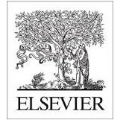Transitioning from a Drive-by-Wire (DBW) system to a fully autonomous driving system (ADS) involves multiple stages of development and demands robust positioning and sensing capabilities. This paper presents a practice-driven framework for facilitating the DBW-to-ADS transition using a 2022 Chrysler Pacifica Hybrid Minivan equipped with cameras, LiDAR, GNSS, and onboard computing hardware configured with the Robot Operating System (ROS) and Autoware.AI. The implementation showcases offline autonomous operations utilizing pre-recorded LiDAR and camera data, point clouds, and vector maps, enabling effective localization and path planning within a structured test environment. The study addresses key challenges encountered during the transition, particularly those related to wireless-network-assisted sensing and positioning. It offers practical solutions for overcoming software incompatibility constraints, sensor synchronization issues, and limitations in real-time perception. Furthermore, the integration of sensing, data fusion, and automation is emphasized as a critical factor in supporting autonomous driving systems in map generation, simulation, and training. Overall, the transition process outlined in this work aims to provide actionable strategies for researchers pursuing DBW-to-ADS conversion. It offers direction for incorporating real-time perception, GNSS-LiDAR-camera integration, and fully ADS-equipped autonomous vehicle operations, thus contributing to the advancement of robust autonomous vehicle technologies.
翻译:暂无翻译


